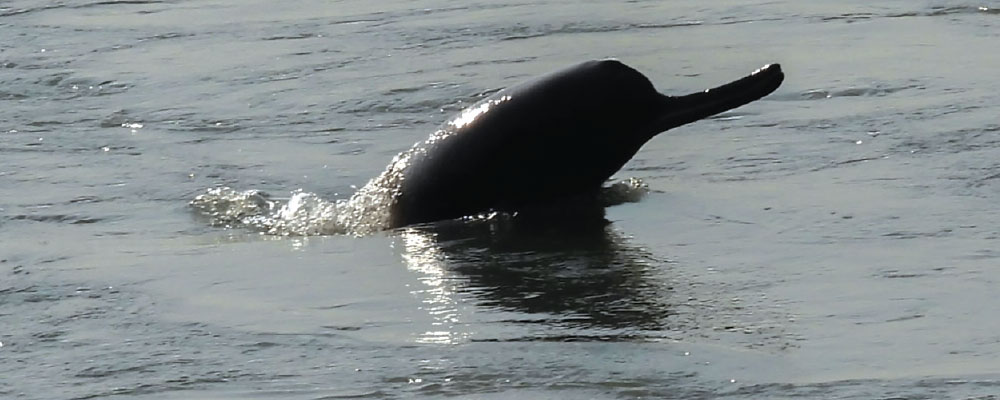
By Baburam Karki,Barahakshetra, Mar.20:The number of dolphins continues to decline in the rivers of Nepal. The rare species of dolphins found in Nepal's Koshi, Karnali and Narayani rivers are declining significantly.
According to Dr. Sambhu Paudel, a dolphin expert, the population of these dolphins, which is already low in number has decreased compared to the past. The natural habitat of dolphins is being disrupted due to various human activities, leading to adverse effects on aquatic biodiversity, he said.
Until two decades ago, it was relatively easy to spot dolphins roaming in the Saptakoshi River in the western part of the Barahakshetra Temple and the northern area of the Koshi Barrage. However, since 2009, dolphins have been spotted in fewer numbers in the north of the Koshi Barrage after the devastating floods of 2008, Poudel informed.
Birendra Gautam, the chief of the National Trust for Nature Conservation under the Koshi Tappu Wildlife Reserve, said only 19 dolphins were recorded in the Saptakoshi River last year.
Gautam said that the rare aquatic dolphin, which thrives in clean water, has not been seen in the Koshi River as often as it used to. He added, “As per last year's census, only 19 dolphins were recorded, with only two recorded in the upper Koshi barrage.”
The dolphins found in the southern region of the river cannot cross upstream through the gates of the barrage when most of them are washed away by flood in the monsoon, resulting in fewer sightings in the northern river region.
Due to the construction of the dams on the Nepal-India border along the Koshi and Gandaki Rivers, Nepali dolphins are unable to return to Nepal after migrating southward. The lack of structures facilitating their return to Nepal has led to a decrease in the dolphin population.
There are two types of dolphins found in the world-- those that thrive in the blue waters of the ocean and those found in the freshwater. Living in clean water poses an additional challenge for dolphins compared to those living in blue waters.
Rajesh Sada, the Chief of the Freshwater Programme at the World Wildlife Fund (WWF) Nepal, said that the increasing water pollution has put dolphins living in fresh water at risk.
Experts often highlight dolphins as intelligent and emotional beings, similar to humans, having consciousness and intellectual abilities.
Due to their highly social nature, dolphins face crises, making their conservation crucial. They also emphasised the urgent need to protect dolphins in such critical situations.
Dolphins are even described in the Hindu epic Mahabharata, known as Matsya-Kanya or Uloopi, indicating their significance in the ancient texts. They are revered as beautiful aquatic beings, often associated with celestial fairies. Dr. Paudel suggested that it was essential for all concerned authorities to take responsibility for the conservation of these magnificent aquatic creatures.
According to Sada, a study conducted by the Department of National Parks and Wildlife Conservation recorded a total of 52 dolphins in the Saptakoshi, Karnali, and Narayani rivers.
Dolphins found in clean water are believed to inhabit rivers such as the Ganges in India, the Indus River in Pakistan and the Amazon in South America. In Nepal, the weight of these dolphins ranges from 60 to 85 kilograms, and according to experts, they can travel up to 60 kilometres per hour.
Dolphins give birth and nurture their calves from July to August. During the monsoon season, when the water level rises, dolphins can be observed closely. Dolphins, who prefer to swim in the water during the warmer periods, are often spotted swimming both in the evening and morning.
The language, behaviour and habits of dolphins found in Nepali rivers cannot be studied closely due to various limitations, said experts. Human activities along the rivers, such as fishing pose higher risks to dolphins.












